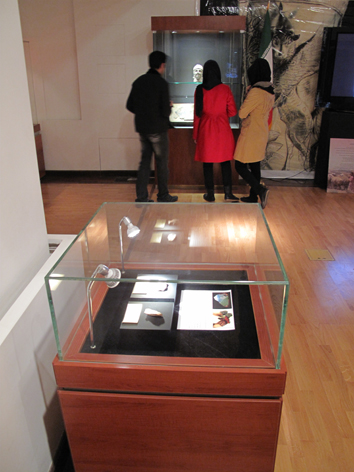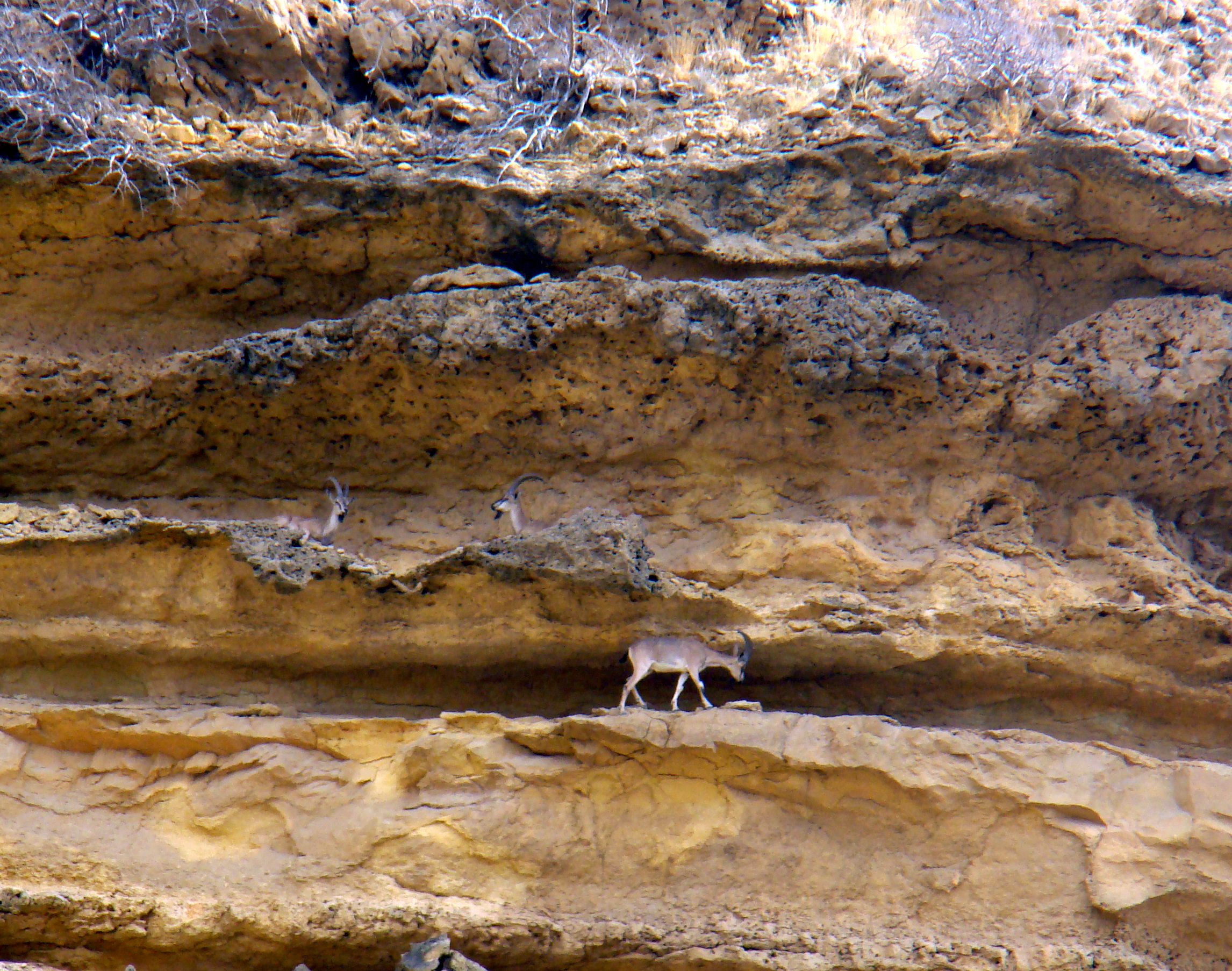|
Marjan Mashkour
Marjan Mashkour ( fa, مرجان مشکور) is an archaeologist and member of the French National Centre for Scientific Research. She is the first Iranian to specialize in the field of zooarchaeology and has been engaged in many field and laboratory projects in Iran and the Near East. Thesis Mashkolur received her Ph.D. in zooarchaeology from the University of Paris I-Sorbonne) in 2001. Her thesis was ''"Chasse et élevage du Néolithique à l’Âge du Fer dans la plaine de Qazvin (Iran). Étude archéozoologique des sites de Zagheh, Qabrestan et Sagzabad"'', (''"Hunting and farming from the Neolithic to the Iron Age in the plain of Qazvin (Iran). Archaeozoological study sites Zagheh, and Qabrestan Sagzabad"'') Research interests Mashkour has published widely on the archaeology of the Near East, including editing 'Zooarchaeology of the Ancient Near East' with Mark Beech. Her research interest is the late Paleolithic fauna of the Zagros Mountains and the domestication of th ... [...More Info...] [...Related Items...] OR: [Wikipedia] [Google] [Baidu] |
Marjan Mashkour,june 2005
Marjan may refer to: Places * Marjan, Croatia, Croatia, a hill on the peninsula of the city of Split * Marjan, Albania, a village in the Gorë municipality, Korçë District, Albania * Marjan, Alborz, a village in Iran * Marjan, Fars, a village in Iran * Marjan, Isfahan, a village in Iran * Marjan island, an archipelago located in Ras al-Khaimah, United Arab Emirates * Marjan, Kerman, a village in Iran * Marjan Babamorad, a village in Iran * Marjan Gomar, a village in Iran * Marjan Qeytul, a village in Iran * Margown, a city in Iran * Maryanaj, a city in Iran * Morad Jan, a village in Iran Other uses * ''Marjan'' (film), 1956 Iranian film * Marjan (name), a given name (includes a list of people with the name) ** Marjan (singer), Iranian pre-revolutionary actress and singer * Marjan (lion), who once lived in the Kabul Zoo See also * * * Marjane (other) Marjane may refer to: People * Léo Marjane (1912-2016), French singer *Marjane Satrapi (born 1969), Iranian-bor ... [...More Info...] [...Related Items...] OR: [Wikipedia] [Google] [Baidu] |
National Museum Of Iran
The National Museum of Iran ( fa, موزهٔ ملی ایران ) is located in Tehran, Iran. It is an institution formed of two complexes; the Museum of Ancient Iran and the Museum of Islamic Archaeology and Art of Iran, which were opened in 1937 and 1972, respectively. The institution hosts historical monuments dating back through preserved ancient and medieval Iranian antiquities, including pottery vessels, metal objects, textile remains, and some rare books and coins."Otraq.com, Iran's Tourism Guide" It also includes a number of research departments, categorized by different historical periods and archaeological topics. History The brick building of the Museum of Ancient Iran was designed by French architects André Godard and Maxime Sir ...[...More Info...] [...Related Items...] OR: [Wikipedia] [Google] [Baidu] |
Living People
Related categories * :Year of birth missing (living people) / :Year of birth unknown * :Date of birth missing (living people) / :Date of birth unknown * :Place of birth missing (living people) / :Place of birth unknown * :Year of death missing / :Year of death unknown * :Date of death missing / :Date of death unknown * :Place of death missing / :Place of death unknown * :Missing middle or first names See also * :Dead people * :Template:L, which generates this category or death years, and birth year and sort keys. : {{DEFAULTSORT:Living people 21st-century people People by status ... [...More Info...] [...Related Items...] OR: [Wikipedia] [Google] [Baidu] |
Iranian Women Archaeologists
Iranian may refer to: * Iran, a sovereign state * Iranian peoples, the speakers of the Iranian languages. The term Iranic peoples is also used for this term to distinguish the pan ethnic term from Iranian, used for the people of Iran * Iranian languages, a branch of the Indo-Iranian languages * Iranian diaspora, Iranian people living outside Iran * Iranian architecture, architecture of Iran and parts of the rest of West Asia * Iranian foods, list of Iranian foods and dishes * Iranian.com, also known as ''The Iranian'' and ''The Iranian Times'' See also * Persian (other) * Iranians (other) * Languages of Iran * Ethnicities in Iran * Demographics of Iran * Indo-Iranian languages * Irani (other) * List of Iranians This is an alphabetic list of notable people from Iran or its historical predecessors. In the news * Ali Khamenei, supreme leader of Iran * Ebrahim Raisi, president of Iran, former Chief Justice of Iran. * Hassan Rouhani, former president o ... [...More Info...] [...Related Items...] OR: [Wikipedia] [Google] [Baidu] |
Iranian Archaeologists
This is a list of archaeologists – people who study or practise archaeology, the study of the human past through material remains. A * Kamyar Abdi (born 1969) Iranian; Iran, Neolithic to the Bronze Age * Aziz Ab'Saber (1924–2012) Brazilian; Brazil *Johann Michael Ackner (1783–1862) Transylvanian; Roman Dacia * Dinu Adameșteanu (1913–2004) Romanian-Italian; aerial photography and survey of sites *James M. Adovasio (born 1944) U.S.; New World (esp. Pre-Clovis) and perishable technologies * Anagnostis Agelarakis (born 1956) Greek; archaeological and physical anthropology *Yohanan Aharoni (1919–1976) Israeli; Israel Bronze Age *Edward R. Ayrton (1882–1914) English Egyptologist and archaeologist *Ekrem Akurgal (1911–2002) Turkish; Anatolia * Jorge de Alarcão (born 1934) Portuguese; Roman Portugal * William F. Albright (1891–1971) U.S.; Orientalist *Leslie Alcock (1925–2006) English; Dark Age Britain * Susan E. Alcock (born 19??) American; Roman provinces * Miranda ... [...More Info...] [...Related Items...] OR: [Wikipedia] [Google] [Baidu] |
Darband Cave
Darband Cave is a Lower Paleolithic site in the Gilan Province in northern Iran, located on the north side of a deep tributary canyon of the Siahrud River, a tributary of the Sefīd-Rūd River that flows into the Caspian Sea. The cave contains evidence for the earliest prehistoric human cave occupation during the Lower Paleolithic in Iran. Stone artifacts and animal fossils were discovered by a group of Iranian archaeologists of the ''Department of Paleolithic'' of the National Museum of Iran and ICHTO of Gilan. The site dates back to the late Middle Pleistocene period. The presence of large numbers of cave bear and brown bear The brown bear (''Ursus arctos'') is a large bear species found across Eurasia and North America. In North America, the populations of brown bears are called grizzly bears, while the subspecies that inhabits the Kodiak Islands of Alaska is kno ... remains and sparse stone artifacts at the site indicates that Darband primarily represents a bear den. ... [...More Info...] [...Related Items...] OR: [Wikipedia] [Google] [Baidu] |
Khuzestan Province
Khuzestan Province (also spelled Xuzestan; fa, استان خوزستان ''Ostān-e Xūzestān'') is one of the 31 provinces of Iran. It is in the southwest of the country, bordering Iraq and the Persian Gulf. Its capital is Ahvaz and it covers an area of . Since 2014, it has been part of Iran's Region 4. Historically, one of the most important regions of the Ancient Near East, Khuzestan is what historians refer to as ancient Elam, whose capital was in Susa. The Achaemenid Old Persian term for Elam was ''Hujiyā'' when they conquered it from the Elamites, which is present in the modern name. Khuzestan, meaning "the Land of the Khuz", refers to the original inhabitants of this province, the "Susian" people (Old Persian "Huza" or ''Huja'', as in the inscription at the tomb of Darius the Great at Naqsh-e Rostam). They are the Shushan of the Hebrew sources where they are recorded as "Hauja" or "Huja". In Middle Persian, the term evolves into "Khuz" and "Kuzi". The pre-Islamic Par ... [...More Info...] [...Related Items...] OR: [Wikipedia] [Google] [Baidu] |
Zagros Paleolithic Museum
Zagros Paleolithic Museum ({{Lang-fa, موزه پارینهسنگی زاگرس) is a museum in Kermanshah, Iran, established in 2008. The museum contains a large collection of stone tools and animal fossil bones from various Paleolithic sites in Iran. In Iran, it is the only museum of its kind. History The museum was established by Fereidoun Biglari and A. Moradi Bisetouni at Tekieh Biglar Baigi, Kermanshah in 2007. Marjan Mashkour, a zooarchaeologist, was in charge of animal fossil identification for the museum. Collections Zagros Paleolithic Museum occupies four rooms which include objects from various Paleolithic and Neolithic sites in Iran, dating from ca. 1,000,000 years to some 8,000 years ago. The first room is an audio room where visitors can watch a documentary about prehistoric stone tools and how Paleolithic artisans made these tools. There is also a full life-size model of a Neanderthal. The second room is dedicated to human and animal bones from sites on the Za ... [...More Info...] [...Related Items...] OR: [Wikipedia] [Google] [Baidu] |
Wild Goat
The wild goat (''Capra aegagrus'') is a wild goat species, inhabiting forests, shrublands and rocky areas ranging from Turkey and the Caucasus in the west to Turkmenistan, Afghanistan and Pakistan in the east. It has been listed as near threatened on the IUCN Red List and is threatened by destruction and degradation of habitat. It is one of the ancestors of the domestic goat (''C. hircus''). Taxonomy ''Capra aegagrus'' was the scientific name proposed by Johann Christian Polycarp Erxleben in 1777 for the wild goat populations of the Caucasus and Taurus Mountains. ''Capra blythi'' proposed by Allan Octavian Hume in 1874 were wild goat horns from Sindh. The following wild goat subspecies are considered valid taxa: *Bezoar ibex ''C. a. aegagrus'' *Sindh ibex ''C. a. blythi'' *Chiltan ibex ''C. a. chialtanensis'' *Turkmen wild goat ''C. a. turcmenica'' *''Capra aegagrus pictus'' The kri-kri was once thought to be a subspecies of the wild goat, but is now considered to be a feral d ... [...More Info...] [...Related Items...] OR: [Wikipedia] [Google] [Baidu] |
French National Centre For Scientific Research
The French National Centre for Scientific Research (french: link=no, Centre national de la recherche scientifique, CNRS) is the French state research organisation and is the largest fundamental science agency in Europe. In 2016, it employed 31,637 staff, including 11,137 tenured researchers, 13,415 engineers and technical staff, and 7,085 contractual workers. It is headquartered in Paris and has administrative offices in Brussels, Beijing, Tokyo, Singapore, Washington, D.C., Bonn, Moscow, Tunis, Johannesburg, Santiago de Chile, Israel, and New Delhi. From 2009 to 2016, the CNRS was ranked No. 1 worldwide by the SCImago Institutions Rankings (SIR), an international ranking of research-focused institutions, including universities, national research centers, and companies such as Facebook or Google. The CNRS ranked No. 2 between 2017 and 2021, then No. 3 in 2022 in the same SIR, after the Chinese Academy of Sciences and before universities such as Harvard University, MIT, or Stanford ... [...More Info...] [...Related Items...] OR: [Wikipedia] [Google] [Baidu] |
List Of Domesticated Animals
This page gives a list of domesticated animals, also including a list of animals which are or may be currently undergoing the process of domestication and animals that have an extensive relationship with humans beyond simple predation. This includes species which are semi-domesticated, undomesticated but captive-bred on a commercial scale, or commonly wild-caught, at least occasionally captive-bred, and tameable. In order to be considered fully domesticated, most species have undergone significant genetic, behavioural and morphological changes from their wild ancestors, while others have changed very little from their wild ancestors despite hundreds or thousands of years of potential selective breeding. A number of factors determine how quickly any changes may occur in a species, but there is not always a desire to improve a species from its wild form. Domestication is a gradual process, so there is no precise moment in the history of a given species when it can be considered to ... [...More Info...] [...Related Items...] OR: [Wikipedia] [Google] [Baidu] |




.jpg)
